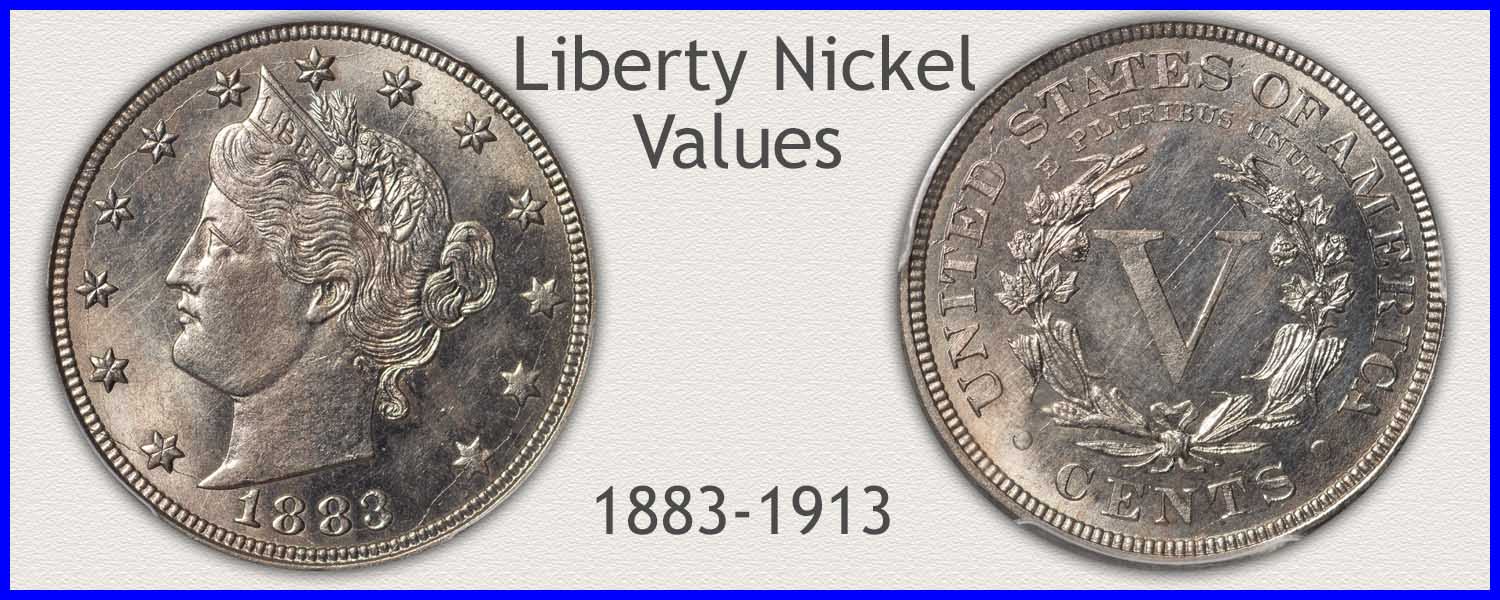Coin Values Moving with Precious Metals: Up-Dated 11/17/2025: Gold $4066 | Silver $50.70
Visual Grading Metrics
Liberty Nickel Fine Grade
When a Liberty nickel approaches the Fine grade, many smaller details still remain visible. Areas of worn and flattened metal sit alongside recognizable features. A view of Liberty's portrait shows it contains many hair and headband elements, giving the appearance of quality.
With a specific approach, Visual Grading Metrics of a Liberty Nickel in Fine Grade confirm this important condition.
 (fig. 1F) Matching to the Highlighted Fine Grade Liberty Nickel Begins to Recognize the Grade
(fig. 1F) Matching to the Highlighted Fine Grade Liberty Nickel Begins to Recognize the Grade
Starting a defined grading approach, match the overall appearance of your coin to the example in the illustration (fig. 1F). Note the emerging detail of lettering in Liberty's headband. Also, hair strand detail and small elements of design above her headband. These small features indicate a coin with moderate wear, the general description of a Fine grade Liberty nickel.
Visual Grading Metrics Used to Identify Liberty Nickels in Fine Grade
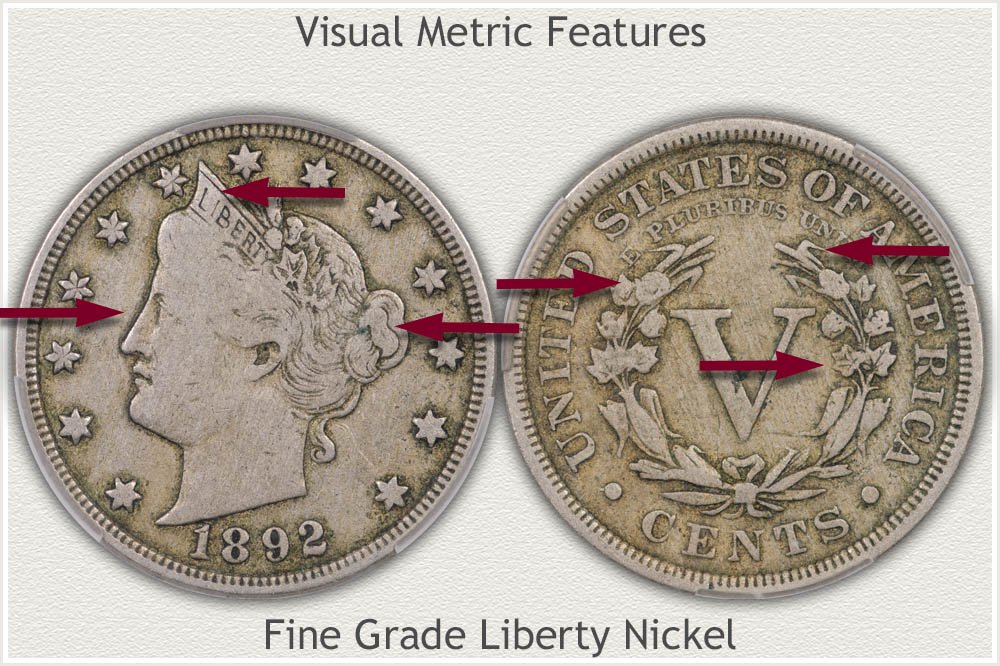 (fig. 2F) Grading Features Used to Visually Rate the Condition of a Liberty Nickel in Fine Grade
(fig. 2F) Grading Features Used to Visually Rate the Condition of a Liberty Nickel in Fine Grade
Visual features that stand out become the focal points, helping measure the level of wear and condition on an old Liberty nickel. Judging the amount of detail in specific areas begins to Rate a coin's condition into defined categories. Inspecting and rating multiple points on the coin gives a cumulative rating score pointing to a grade level. Familiarize the inspections points illustrated (fig. 2F), these are key areas.
- Clarity of the letters of LIBERTY within the headband
- Fine line hair detail from Liberty's forehead to bun at the back
- Close inspection of the eye details or her portrait
- The many leaves of the Wreath on the reverse
- Wheat grains and subtle leaf details
- Defining edges of specific cotton Bolls
Use the visual grading metrics of a Liberty nickel in Fine grade to Rate and then Score the preservation level of your coin.
Rating and Scoring Metrics Provided by 27 Study Coins
Inspecting a large group of professionally graded Liberty nickels yielded percentage results for each visual metric. High percentages of visual metrics within a preservation level pointed to an acceptable rating score. A total number of positive scores strongly indicates when a coin's condition qualifies at the Fine grade level. Rate the condition of each metric conservatively, improving accuracy and avoiding "optimistic grading."
🔎At the Fine Grade Level a Few Tools Help Identify a Moderately Worn Liberty
Lighting the subject coin becomes important when judging the presence of subtle features. A single light source, a foot or so away, highlights small raised elements that cast a shadow. The technique of rotating and tilting the coin helps bring out these faint grading points.
Secondly, add clarity by using magnification. The coin market relies on a 5x to 7x power close-up view of a coin's surface when grading. Those faint details seen when magnified are the deciding metrics determining an accurate grade. At the Fine grade level, hair detail, quality of lettering, and remaining detail on Liberty's portrait all combine to establish levels of wear.
An Overall Inspection Highlights Potential for the Fine Grade Range
 (fig. 3F) Match You Coin to the Hair Detail Above Liberty's Forehead
(fig. 3F) Match You Coin to the Hair Detail Above Liberty's Forehead
A close match of the example above (fig. 3F) identifies a coin requiring further examination to confirm the Fine grade quality. Liberty's portrait now shows lettering within a headband, and many fine details within her hair.
Examine the amount of hair strands visible above her forehead extending to her ear. Note this wide area displays few individual strands. This high-profile area is mostly smooth and shows a characteristic level of wear. Hair detail becomes visible beyond the ear but lacks detail over the forehead. Coins with a mixture of detail and flattened areas fit into the moderate wear category. Inspecting and rating a variety of visual metrics narrows the wear levels into an accurate grade.
Also note the letters of LIBERTY are now readable within the headband above the forehead hair. Begin the Rating and Scoring of visual metrics with judging the quality and clarity of these small letters.
Letters of LIBERTY Visual Metrics
 (fig. 4F) Comparing the Qualities of the Lettering in the Headband
(fig. 4F) Comparing the Qualities of the Lettering in the Headband
Liberty's portrait in Fine grade condition begins to display many small design features. Of interest to collectors are the letters within her headband. The quality of LIBERTY written within her headband is an important grading feature. This area of the coin is also high in profile, subject to early and heavy wear. Removing metal lessens the clarity of the letters, a useful visual metric helping judge a coin's quality.
Two main stages of letter visibility: Full or Incomplete, become the quality judgment. Inspect the illustration (fig. 4F). The letter "I" is often the first letter beginning to disappear when worn. Letters "B" and "Y" are next to inspect closely. These two tend to fade along their lower half. The Incomplete panel shows an example missing the "I" and the "B" as incomplete.
With the Full or Incomplete letter guideline, inspect the letters and apply the following metric to rate the quality of the letters of LIBERTY.
Visual Rating Definitions | Letters of LIBERTY
- Seven Letters Full: | All seven letters are full, complete, and readable. In this condition some letters appear faded and less bold than others. Count the letter when complete. Often the letter "I" appears very faint. If detectable, count the letter.
- Six Letters Full: | Six of the letters appear full, complete, and readable. Count the letter when complete. Note: Inspect the lower half of the "B" and "Y" to ensure completeness although they are often faded and weak in these areas.
- Five Letters Full: | Five or fewer readable, complete letters. Missing and partial letters are not counted.
Determine the rating of the Letters and indicate their condition.
Rating: Letters of LIBERTY
|
Seven Letters Full |
Six Letters Full |
Five Letters Full |
Rating the clarity of these small letters of LIBERTY identifies condition within a specific range. A high degree of clarity is a strong requirement for the Fine Grade. A rating of 6 to 7 Full Letters qualifies as a Positive Score. When meeting this metric quality, check the circle to record a Positive Score.
Scoring: Letters of LIBERTY
|
|
Positive Score |
6 to 7 Full Letters Rates a Positive Score
Research Data Results: Letters of LIBERTY Visual Metrics
Study Group of 25 Fine Grade Liberty Nickels
Rating and Scoring the letters within the headband produced these percentage results. The study group of Fine grade nickels showed only minor variances.
- 64% | Were nicely detailed, displaying all 7 letters.
- 28% | Of the graded nickels was missing one letter.
- 8% | Showed an amount of wear leaving only 5 or fewer letters visible.
Conclusion/Key Points: These letters within the headband are a highly visible and important grading metric. With only moderate wear across the coin, collectors expect to find most letters readable. 92% of coins graded Fine condition showed 6 to 7 letters visible. This provides a strong percentage rating. Give a Positive Score to the Metric of 6 to 7 Letters of LIBERTY showing.
Rating the Visual Metrics of Liberty's Hair Behind the Ear
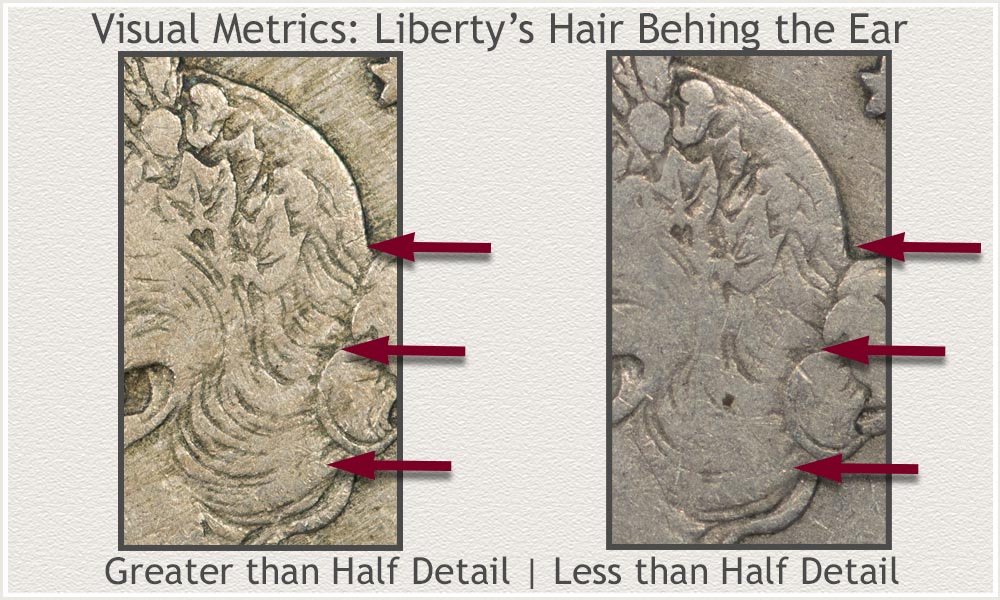 (fig. 5F) Comparing the Visual Metrics of Wear Levels to Hair Back of Ear
(fig. 5F) Comparing the Visual Metrics of Wear Levels to Hair Back of Ear
One large area of Liberty's portrait, the hair behind her ear, contains many fine lines and contoured details. This specific area starts at the ear and ends at the beginning of the bun. Notice in the image (fig. 5F), fine strands of hair remain visible from the neckline to the top of her head. A close inspection recognizes strand detail towards the top, middle, and lower portions of the feature. Focus on the amount of hair and then on the amount of flattened, worn metal in these areas. Comparing the two reference images helps see the distinct difference between the qualities of detail. Use the following when rating the visual metrics and condition of this feature.
Visual Rating Definitions | Hair Behind Ear
- Half or More Visible Hair Strands: | Focus on the hair strands visible and compare to the amount of flattened metal. Notice the size and area of missing and flattened design is less than half of the total area. Many strands extend from ear to bun.
- Less Than Half: | Visibly less than half of the hair strands remain defined. Areas of flat metal and merging design account for an area greater than half the total. Many to Most of the strands do not extend from ear to bun.
Determine and then rate if the hair detail remains visible above or below half the total amount.
Rating: Liberty's Hair Behind Ear
|
Greater than Half |
Less than Half |
Many deep recesses defining hair strands extending across the area indicates a quality within grade range. Identifying Half or More Hair Detail Rates a Positive Score. Check to record a Positive Score.
Scoring: Liberty's Hair Detail Behind Ear
|
|
Positive Score |
Half or More Hair Detail
Research Data Results: Hair Detail Behind Ear to Bun Visual Metric
Study Group of 25 Fine Grade Liberty Nickels
Rating and Scoring the Visual Hair Detail Behind the Ear to Bun produced these percentage results.
- 68% | Of the Fine Grade nickels in the study group remained well detailed, with at least half of the hair detail showing.
- 32% | Displayed fewer than half of the hair details. This area was visibly flattened. Merged strands covered large flattened areas.
Conclusion/Key Points: Visibility of hair strands contributes a valuable metric. A large percentage of coins (68%) were well detailed in this area. Also important to note: Liberty's hair detail is one of many contributing factors used to determine condition. Those coins within the 32% group have strong metrics in other features.
Rating the Visual Metrics of Liberty's Hair Bun
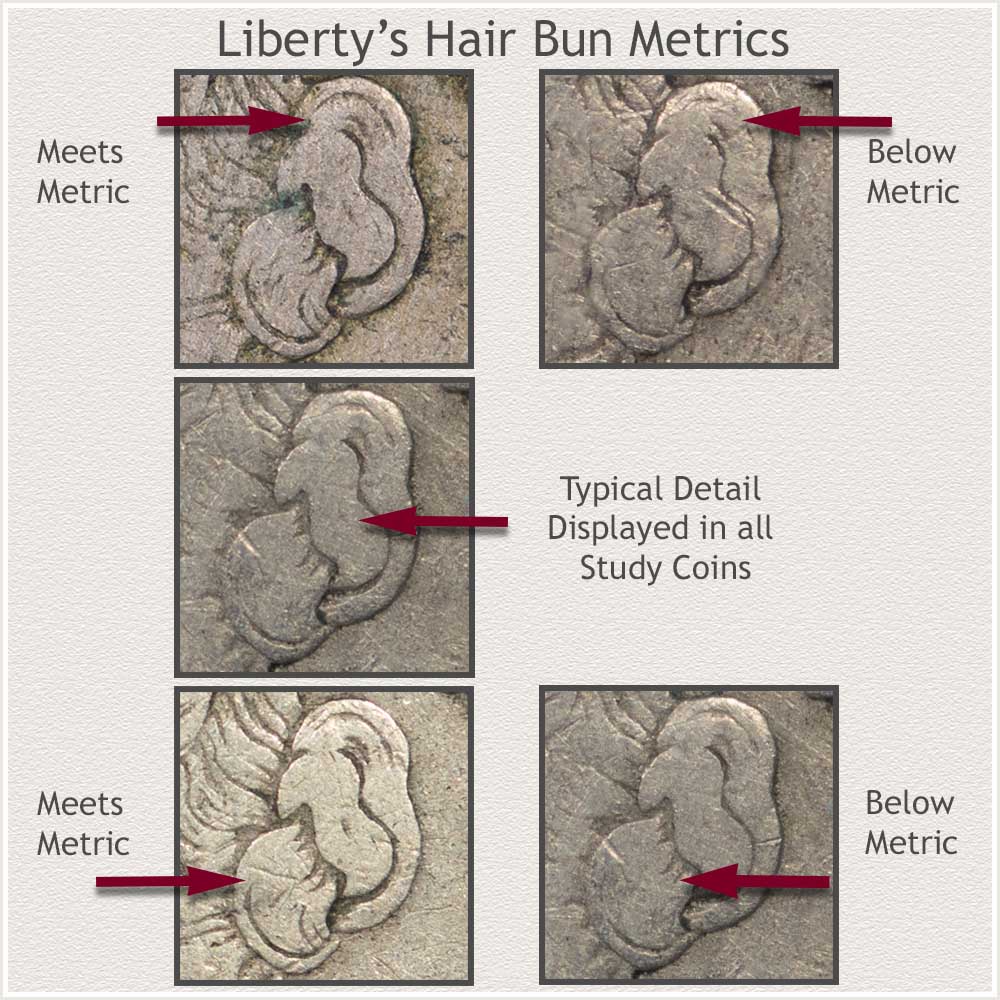 (fig. 6F) Comparison Metric Details in Liberty's Hair Bun
(fig. 6F) Comparison Metric Details in Liberty's Hair Bun
Liberty's hair is brought together and tied into a detailed bun at the back of her head. The bun itself becomes a complete design feature of the portrait. At this level of overall wear, notice three distinct areas within the bun. A top, middle, and lower detail are each defined by a deep recess. When examined closely, remnants of individual hair strands are also visible.
When judging the bun element, first determine the presence of the three separate areas within the bun. Compare to the examples in the image (fig. 6F), noting a separation of the Top, Middle, and Lower area. This separation helps recognize a condition approaching the Fine Grade level. A further judgment of each area and its visible metrics narrows the condition level.
Inspect each separate area of the bun using the following definitions.
Visual Rating Definitions | Hair Bun Back of Head
The following definitions meet the Fine Grade level of condition.
| Two or more distinct hair strands visible. These run at least partway along the upper and lower areas of the zone.
Check the number of Areas meeting the metric definitions.
Rating: Liberty's Hair Bun
|
Three Areas |
Two Areas |
One Area |
This hair bun detail generally receives moderate to slightly heavier wear. Magnify the three bun areas on your coin and determine a match to the example images. When 1 or More Areas Meet the Visual Metric this Rates a Positive Score.
Scoring: Liberty's Hair Bun
|
|
Positive Score |
1 or More Areas Meeting the Visual Metric Rates a Positive Score
Research Data Results: Hair Detail of the Bun Visual Metric
Study Group of 25 Fine Grade Liberty Nickels
Rating and Scoring the Visual Hair Detail Within the Bun produced these percentage results.
- 0% | Showed visible detail meeting the metrics in all three areas within the Bun. The center zone in all examples lacked enough detail to qualify. This helps define the grade. A few coins were close with traces of detail.
- 68% | Of the study nickels received a Rating of 2 Areas with detail. These areas showed deep recesses indicating hair strands.
- 24% | A small percentage of nickels remained with enough hair detail in one area qualifying for the metric.
- 8% | Showed no hair detail in any of the zones.
Conclusion/Key Points: Moderate wear becomes visible in the fine details of the Hair Bun. A defining percentage (68%) of nickels in Fine grade gives a suitable rating indicating a coin's condition. Although many coins (24%) rated only one or fewer zones within the metric, this is also significant. With 92% showing detail in 1 or more areas, this becomes the Positive Scoring Metric.
Worn coins when judged on many features and metrics helps determine condition with greater accuracy. One area of lower quality is offset by averaging with other areas of higher quality. A high-quality Fine grade coin contains Hair Strands in 2 or more areas.
Visual Metrics: Liberty's Eye Detail
 (fig. 7F) Match to a Visual Metric to Rate the Eye Detail on a Fine Grade Liberty Nickel
(fig. 7F) Match to a Visual Metric to Rate the Eye Detail on a Fine Grade Liberty Nickel
Liberty's eye contains many fine details that show measurable signs of wear. Set deep below the contour of her cheek, the eye has an upper lid, a lower lid line, and the eye, noted by the curved front.
Her upper eyelid has two elements: a line separating the lid from the forehead and a line where it meets the eye. The lower lid defines the eye with one line. These lines meet at the back corner of the eye. In the moderate wear stage, the high contours of the cheek are worn and lowered near to the level of the eye detail. This eyelid metric determines a specific amount of overall wear.
Viewing Technique: The lighting within the image (fig 7F) was from behind Liberty's head. This cast the light across the eye, improving the contrast and shadows, highlighting the eyelids.
Visual Rating Definitions | Liberty's Eye Metrics:
- Full: Although visibly worn, both the Top and Bottom Eyelids remain visible. Importantly, these lines meet at the back corner of the eye.
- Partial: Only parts of the Top and-or Bottom Eyelids show. Generally, these visible areas are towards the front of the eye. The lines do not remain visible and connect towards the back of the eye.
- None: Both the Top and Bottom Eyelid defining lines are missing.
When inspecting condition, rate the eyelid detail into one of the three metric levels.
Rating: Liberty's Eye Detail
|
Full |
Partial |
None |
Key features of Fine Grade Liberty nickels are the small details giving the coin a quality appearance. Portrait elements play a large role in achieving the needed amount of pleasing elements to reach grade level.
Use the rating inspection and check the Positive Score button when either Partial to Full Eyelid Detail remains visible.
Scoring: Liberty's Eye Detail
|
|
Positive Score |
A Partial to Full Eye Lid Detail Rates a Positive Score
Research Data Results: Eyelid Detail Metrics Rating a Positive Score
Study Group of 25 Fine Grade Shield Nickels
When inspecting the detail of Liberty's Eye Lids, the study nickel group showed the following useful results.
- 56% | Qualified at the metric of Full Eyelid Detail.
- 44% | Showed a Partial Amount of Eyelid Detail.
- 0% | No coin Rated within the None metric.
Conclusion/Key Points: Two significant measurements showed strong and defining results. First, all coins at the Fine grade level had some detail remaining in the eye area. Liberty's eye was recognizable and detailed.
Secondly, the close percentage results of Full to Partial Eye Detail metric demonstrate moderate wear. With an important number of coins with Partial Eyelid Detail showing, 44% displayed an acceptable amount of wear.
Use the Partial to Full Eyelid Detail metrics to Rate a Positive Score.
Wreath Metric: Six Leaves and Central Veins
 (fig. 8F) Visual Metric Comparing Visible to Non-Visible Leaf Detail
(fig. 8F) Visual Metric Comparing Visible to Non-Visible Leaf Detail
On the reverse of these Liberty nickels, a large wreath surrounds the "V" Roman numeral. Many details of corn, cotton, and leaves within the wreath contain very small details. This metric concentrates on the condition of the six leaves, three on either side.
At the Fine grade condition, most small details of the leaf design have worn smooth and begun to fade. Additionally, outer edges defining a leaf are often merged and missing. This overall description of leaf detail fits the moderate wear level.
The depth of recesses defining central veins of a leaf becomes a visible marker indicating condition. Leaves with visible vein detail are those highlighted in illustration (fig. 8F). Focus on the clarity and amount of detail. Leaves without central detail are noticeably different in appearance from ones with detail. Apply the following visual metrics and a close inspection to individually rate the condition of all six leaves.
Visual Rating Definitions | Wreath Leaves with Visible Vein Detail
- Visible Vein Detail: | Leaf appears well worn. At least a minor amount of the central vein detail shows. One or more recessed lines representing vein detail extends from the base towards the center of leaf.
- Missing Vein Detail: | Leaf is worn smooth. Central vein lines missing. Importantly, small recessed "dots" at the base of the leaf do not count as vein detail.
Count the number of leaves with veins that qualify with visible detail.
Rating: Six Leaves and Central Veins
|
4 or More Leaves with Vein Detail |
3 or Fewer Leaves with Vein Detail |
With the detail of the leaves rated, check the dot if 4 or more leaves show visible central vein detail.
Scoring: Six Leaves and Central Veins
|
|
Positive Score |
Four or More Leaves with Vein Detail
Research Data Results: Wreath Leaves with Visible Vein Detail Visual Metric
Study Group of 25 Fine Grade Liberty Nickels
Rating and Scoring the Visual Leaf Vein Detail produced these percentage results.
- 76% | A significant amount of the study nickels remained with at least 4 or more leaves displaying vein detail within the leaves.
- 24% | Of the nickels examined, this smaller percentage showed 3 or fewer leaves with vein detail.
Conclusion/Key Points: A large percentage group of 76% indicates the amount of detail required to meet the Fine grade level. 4 of the 6 leaves within the wreath displaying vein detail fit the category of moderate wear. This amount of leaf detail raises the expectation of a Liberty nickel to grade at least Fine condition. Use the Metric of 4 or More Leaves with Vein Detail as Rating a Positive Score.
Wreath Metric: Wheat Grains and Leaf Overlay
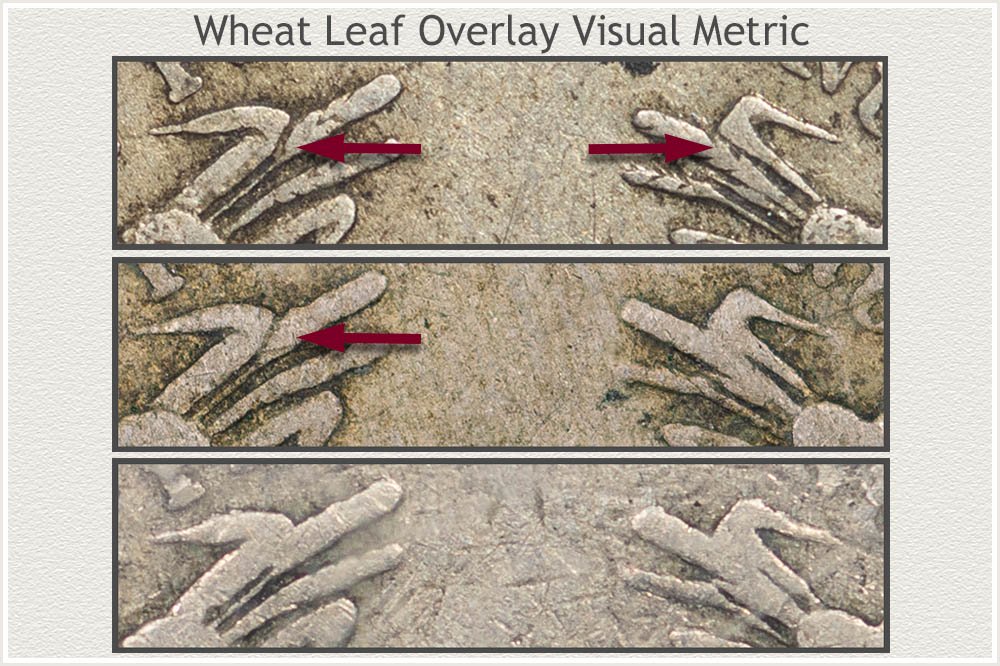 (fig. 9F) Comparing the Defined and Merged Metric of Wheat Grain Overlay Leaves
(fig. 9F) Comparing the Defined and Merged Metric of Wheat Grain Overlay Leaves
Examining another small feature of the wreath adds an insight to its overall condition. At the very top of the wreath, wheat grains extend upward. These are on both sides and have a leaf detail partially overlaying the grains. Inspecting the close-up view (fig. 9F), the leaf edges define and separate both design elements.
Two states of condition present visual metrics of the amount of wear on the wheat grains and their leaves. Moderate wear on the surface causes the separation edge of the top leaves to become shallow and close to merging with the grains. When closely examined, this grading point helps determine a subtle condition difference. Use the following metrics applied to your coin's wheat grain condition.
Visual Rating Definitions | Wheat Leaf Overlay of Wheat Grains
- Defined: A distinct line separates the entire edge of the leaf from the wheat grains below. No merging of the design elements.
- Merged: A blending and merging occurs anywhere along the leaf edge with the wheat grains. A partially merged area (an indistinct separating line) also places the condition within the Merged metric.
Inspect this small area closely. Rate the condition of the leaf and wheat grain metric into one of the possible three condition categories.
Two Defined | One Defined | 0 Defined
Rating: Wheat Grains and Leaf Overlay
|
Two Defined |
One Defined |
None Defined |
Award a Positive Score when confirming at least One Defined Leaf Edge Remains Visible.
Scoring: Wheat Grains and Leaf Overlay
|
|
Positive Score |
One or More Defined Leaf Edge Detail Visible
Research Data Results: Defined Wheat Leaf Edge Detail Visual Metric
Study Group of 25 Fine Grade Liberty Nickels
Rating and Scoring the Visual Wheat Leaf Edge Detail produced these percentage results.
- 56% | Displayed 2 nicely defined edges of the Wheat leaves in the areas where they meet the grains.
- 40% | Of the study nickels, a significant group had one defined leaf edge clearly visible.
- 4% | A very small percentage of the examples were worn to the point both leaf edges merged with the wheat grains.
Conclusion/Key Points: The Score of 96% of the nickels rating at least one defined leaf edge becomes the metric. This strong indication of condition defines the moderate wear requirement to reach Fine grade. A split of 56% with both edges visible to the 40% with only one edge remaining also indicates the degree of wear within the grade range. This small detail within the wreath gives a large insight to the coin's condition.
Wreath Metric: Top Two Cotton Bolls Visible Edges
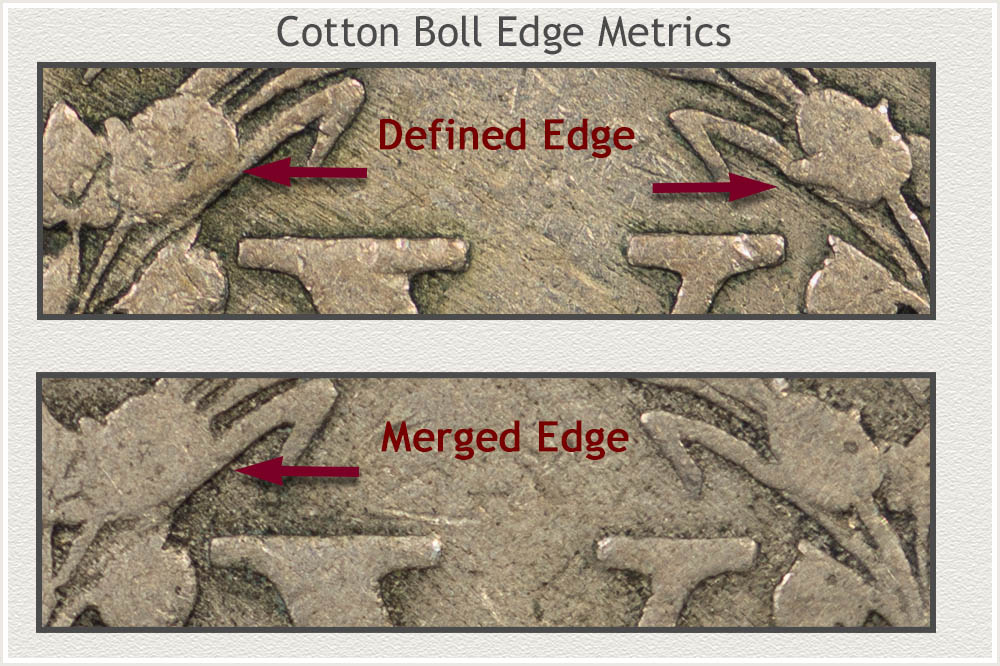 (fig. 10F) Visual Metric of a Defined or Merged Cotton Boll Edge
(fig. 10F) Visual Metric of a Defined or Merged Cotton Boll Edge
There are two small cotton bolls located above the "V" on the wreath. When a Liberty nickel reaches this stage of wear, both (one on each side of the wreath) appear mostly smooth. Focus on the inner edge of the boll nearest the top of the "V." A wheat leaf is just below the boll's edge. A defined line separating these features provides a visual metric indicating the amount of wear. The illustration (fig. 10F) highlights the position of the defining line and wear amounts. Use the following metrics as a grading guide.
Visual Rating Definitions | Top Two Cotton Bolls Visible Edge Metric
- Defined Edge: A defined edge shows where the cotton boll meets the leaf below. This edge remains complete and distinct over the leaf.
- Merged Edge: Any part of the cotton boll's edge has merged and become indistinct as it passes over the wheat leaf below.
This metric often requires a magnifying glass to detect a complete edge. Although a small area, the rating of the feature adds to a total metric of the wreath's condition. Rate the visibility of the two edges into the following classifications:
Two Bolls With Edges | One Boll With an Edge | 0 Bolls With Edges
Rating: Cotton Bolls Visible Edge
|
Two Bolls With Edges |
One Boll With Edge |
None With Edges |
Identifying moderate wear often relies on small details. Using a close-up view, detect if the defining edge of each cotton boll remains visible and defined. Check the positive score when both cotton bolls are separate from the leaf below.
Scoring: Cotton Bolls Visible Edge
|
|
Positive Score |
Two Defined Edges Rates a Positive Score
Research Data Results: Edges on Top Two Cotton Bolls Visual Metric
Study Group of 25 Fine Grade Liberty Nickels
Rating and Scoring the Top Two Cotton Bolls Visual Metric produced these percentage results.
- 80% | Of the inner edges of the two bolls were clear and defined where they lay over the leaf below.
- 20% | Showed a clear edge on one Boll. The edge on the other boll faded and merged with the leaf below.
- 0% | None of the study nickels showed excessive wear, eliminating the defining edge on both top cotton bolls.
Conclusion/Key Points: This small design element displays the amount of wear on both sides of the wreath. Judging these separated areas helps inspect most of the surface condition. A measurable amount: 80% of the coins maintained both edges. This qualifies a coin as displaying moderate wear overall. Confirming moderate wear, all showed at least one edge. None of the examples were missing both metrics. Using the Metric of 2 Defined Edges Rates a Positive Score and indicates a nickel within the Fine grade range.
Final Score: Multiple Visual Metrics Indicate Wear Level of a Fine Grade Liberty Nickel
The following Final Score pulls together the cumulative results of the many visual grading metrics applied to the coin's condition.
A Fine grade Liberty nickel has a quality appearance with an appreciation among collectors. Demand by the market shows strong Liberty Nickel Values
A Final Score of 5 or More Positive Metrics highlights a Liberty Nickel well within the Fine Grade range.
Final Scoring: Visual Metrics Fine Grade Shield Nickel
|
Positive Score |
Design Device |
Visual Grade Metric |
|
|
Letters of LIBERTY |
6 to 7 Full Letters |
|
|
Hair Behind Liberty's Ear |
Half or More Hair Detail |
|
|
Liberty's Hair Bun |
1 or More Areas Meeting the Visual Metric |
|
|
Liberty's Eye Detail |
Partial to Full Eye Lid Detail |
|
|
Six Leaves and Vein Detail |
Four or More Leaves with Vein Detail |
|
|
Wheat Grains and Leaf Overlay |
One or More Defined Leaf Edge Detail Visible |
|
|
Cotton Bolls Visible Edge |
Two Defined Edges Rates a Positive Score |
Research Data Results: Final Scoring Fine Grade Liberty Nickel
Study Group of 25 Fine Grade Liberty Nickels Produced the Following Percentage Results
This Fine grade condition of a Liberty nickel displays a balanced combination of visible wear and significant smaller detail. The above 7 visual metrics point to an expected level of preservation. The following results of scoring each of the study nickels show percentages of coins meeting metric levels.
- 52% | Rated All Seven Metrics Positive
- 24% | Of the nickels were positive in 6 metrics
- 8% | Scored 5 metrics positive
- 8% | Rated 4 metrics as positive
- 8% | Rated 3 or fewer metrics as positive
Conclusion/Key Points: A very clear percentage dividing line occurs at the 6 or more positive metrics level. 76% of the study nickels showed 6 or more positive metrics overall. When adding the 8% of the coins scoring 5 positive metrics to the total, this now becomes 84% of the entire study group. Representing a strong majority of the coins, 5 or more positive metrics is a reliable indicator of a Liberty nickel in the moderate wear Fine Grade category.
Use the Rating of 5 or More Positive Metrics to Indicate a Positive Final Score.
References
U.S. Mint. Symbols on Our Coins
https://www.usmint.gov/learn/history/us-circulating-coins
U.S. Mint. Catalogue of Coins of the United States
https://nnp.wustl.edu/library/book/554591
Coin Values | CoinStudy Articles
Liberty Nickel | Visual Grading Metrics Series
Visual Grading Metrics: Liberty Nickels Mint State Grade
Visual Grading Metrics: Liberty Nickels Extremely Fine Grade
Visual Grading Metrics: Liberty Nickels Good Grade
Grading Liberty Nickels | Starting Guide
A quality condition Liberty nickel is a surprisingly difficult coin to find. These are highly valued in the coin market. Review the guide to develop an understanding of the grading process.
How to Grade Liberty Nickels | Visual Guide
Follow through the steps of judging the different conditions of coins. Each level of preservation has distinct factors deciding its grade. Close-up images point to key condition features. Descriptions identify specific grading metrics. Also, review the video presenting an overview of both the grading process and the different grades.
Liberty Nickel Values
All Liberty Nickels have a base collector value above their 5-cent face value. Reference the value chart listing dates and grades.
Liberty Nickel Values | Condition and Grade Determine Worth
Notice on the value chart the premiums awarded to Fine grade Liberty nickels. Stand-out dates, 1885 and 1886, are very scarce. However, all dates enjoy strong values. Continue the value process.
★Coin Values Discovery... finds Liberty Nickel Values and...
Value charts spanning old pennies to gold coins. Importantly, use the images of the different series to identify your coins. Follow a series of steps identifying the date and mint combination leading to an accurate reading of value charts. Discover how much a box of old coins is worth.

